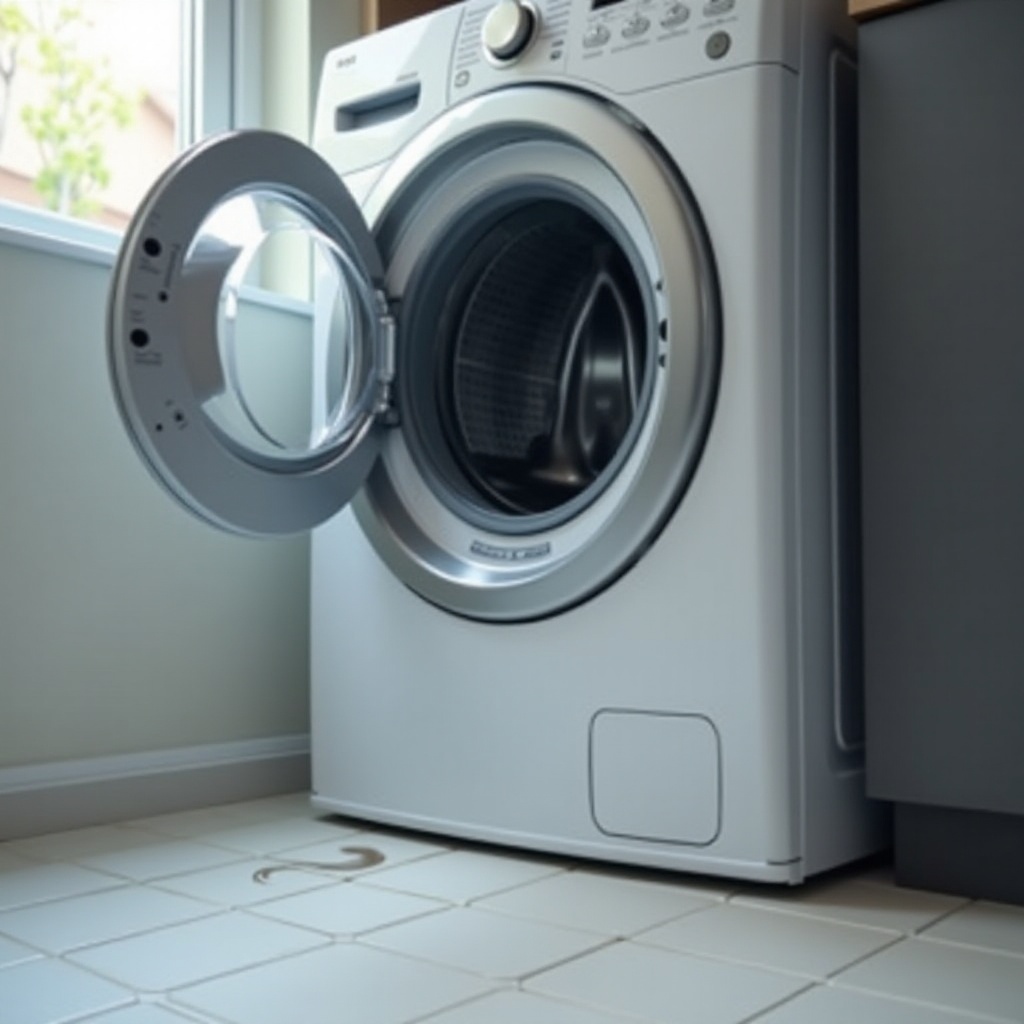Introduction
A leaking washer can cause frustration and inconvenience in your daily routine. Understanding the common reasons behind washer leaks and knowing how to fix them can save you time and money. This comprehensive guide will walk you through the typical causes of leaks, how to diagnose them, and provide solutions for fixing a leaking washer.

Common Causes of Washer Leaks
Washer leaks can stem from several sources. Identifying the cause is the first step towards rectifying the issue.
Leaky Hose Connections
Hose connections are the most common culprits of a washer leak. Checking the hose connections from the washer to the wall and ensuring they are tight can often resolve the problem. If you find any cracked or worn-out hoses, replacing them might be necessary.
Faulty Door Seal
The door seal, especially in front-load washers, is another common source of leaks. If the seal is cracked, worn, or has accumulated debris, it can allow water to seep out during the wash cycle. Regularly inspecting and cleaning the door seal can help prevent leaks.
Broken or Clogged Drain Pump
The drain pump is responsible for expelling water from the washer. If it becomes blocked or damaged, water can leak from the machine. Checking the drain pump for clogs or damage and cleaning or replacing it as needed can stop leaks.

How to Diagnose the Source of the Leak
Diagnosing the source of a washer leak involves systematic inspection. Here’s how to perform an effective diagnosis.
Visual Inspection
Begin with a thorough visual inspection of the washer. Look for water pooling around the machine and trace it back to its source. This can help you identify if the issue is with the hoses, door seal, or another component.
Checking Hose Connections
Inspect the hose connections at both the washer and the wall. Ensure they are securely fastened and free from cracks or wear. Tightening loose connections or replacing damaged hoses can often resolve leaks in this area.
Inspecting the Drain Pump
Next, check the drain pump for any blockages or damage. Unplug the washer, remove the access panel, and inspect the pump. If you see any debris, clean it out thoroughly. If the pump is damaged, replacing it may be necessary.
DIY Fixes for a Leaking Washer
In many cases, you can fix a leaking washer yourself. Here are some effective DIY solutions.
Tightening Hose Connections
If you’ve identified leaky hoses, start by tightening the connections. Use pliers to ensure a secure fit, but be careful not to over-tighten as this can damage the hoses. Replace any hoses that are cracked or severely worn.
Replacing the Door Seal
If the door seal is the issue, you’ll need to replace it. Start by ordering the correct replacement seal. Follow these steps:1. Unplug the washer for safety.2. Open the washer door and remove the old seal by slowly pulling it away.3. Clean the area thoroughly before installing the new seal.4. Attach the new seal, ensuring it fits snugly and evenly around the door.
Cleaning the Drain Pump
Clogs in the drain pump can easily be cleaned. Here’s how:1. Unplug the washer.2. Remove the access panel.3. Take out the drain pump and clean out any debris.4. Reassemble and test the washer.

Preventative Maintenance Tips
Preventing washer leaks involves regular maintenance and proper use.
Regular Inspection Routine
Conduct regular inspections of your washer. Check the hoses, door seal, and pump for any signs of wear or damage. Replacing components that are showing signs of wear can prevent future leaks.
Proper Loading Techniques
Overloading your washer can lead to leaks. Ensure you are loading the washer according to the manufacturer’s guidelines. Balance the load to prevent strain on the internal components.
Maintenance of Seals and Gaskets
Regularly clean the door seals and gaskets. This prevents debris build-up that can damage the seals and cause leaks. Use a mild detergent and a soft cloth to clean these areas.
When to Call a Professional
Despite your best efforts, some issues may be beyond DIY fixes.
Identifying Beyond-DIY Repairs
If you’ve tried the DIY fixes and the problem persists, or if you’re uncomfortable attempting the repairs, it’s time to call a professional. Issues with the electronic components or internal parts often require expert attention.
Choosing a Reliable Repair Service
Look for a reputable repair service with positive reviews and qualified technicians. Getting a professional assessment can provide a proper diagnosis and ensure that the repairs are done correctly, preventing future issues.
Conclusion
Understanding why a washer leaks and knowing how to diagnose and fix the issue can save you from costly repairs and water damage. By following the steps outlined in this guide and performing regular maintenance, you can keep your washer in good working order and avoid leaks.
Frequently Asked Questions
How often should I check my washer for leaks?
It is recommended to inspect your washer every few months to catch any potential issues early and prevent leaks.
Can overloading my washer cause it to leak?
Yes, overloading can strain the internal components and cause leaks. Always follow the manufacturer’s load recommendations.
What should I do if the leak persists after trying DIY fixes?
If the leak persists, it’s best to call a professional repair service to diagnose and fix the problem, as it may be an issue beyond DIY repair.
